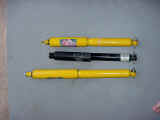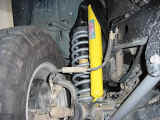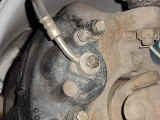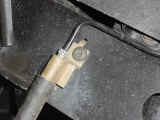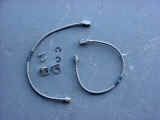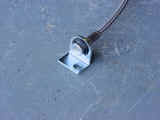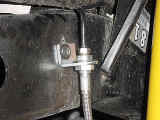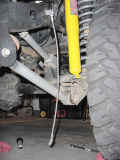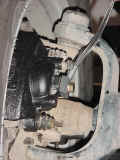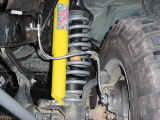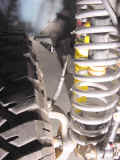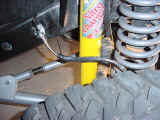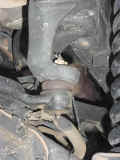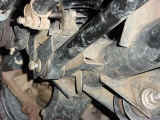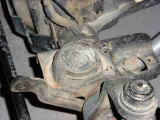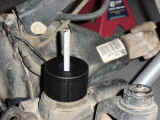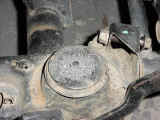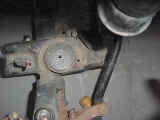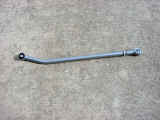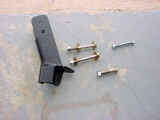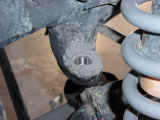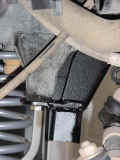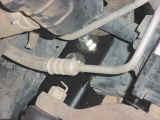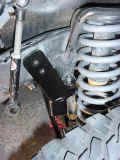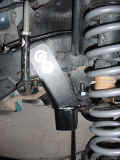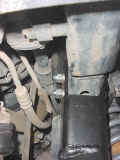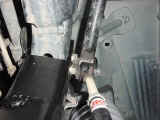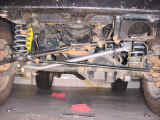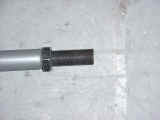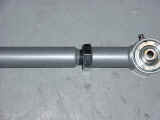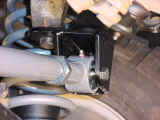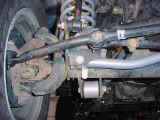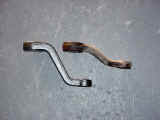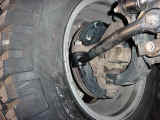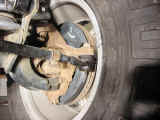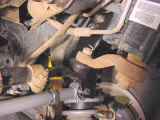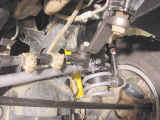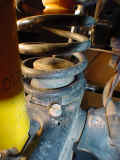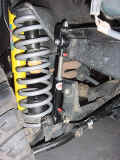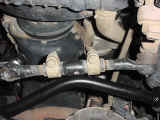| 2. The first things you need to disconnect
are the sway bar linkage, and front shocks. I have JKS Quicker Disconnects already installed, so I just pulled
the pins and off they came. For those of you that don't have
these you will need a T-55 Torx and a 18mm Combo wrench to remove
the bottom bolt. Place the Floor jack back under the axle
to hold the axle. The front shocks are what limits your droop,
so the axle will fall away once you take the shock off, don't worry
it doesn't go far, but can make getting the shock off a pain. I
pulled these off before I jacked up the Jeep. |
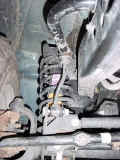 |
|
5. Before you install the new OME shocks you
will need to install the bar pins. Pay attention to the bar
pins, and don't just dump them into a big pile. The front
bar pins are shorter than the rear and the rears you need to make
certain that you put them on the top since both ends have eyes.
A vise makes putting the bar pins in easy, but if you don't have
one take a big deep well socket and put it on one side against the
ground, and then drive the bar pin in from the other side.
Simple directions is put washer on bar pin, drive bar pin through
bushing, put washer on bar pin, put external snap ring on bar pin.
Make certain the snap ring goes into the groove.
Bar
Pin Installation:
Way #1 (Tools required: External Snap Ring
Pliers, 2 Deep well sockets(16mm and 19mm work well), Hammer)
Insert one washer onto the bar pin so that
is sits on the shoulder, wedge the end of the bar pin in the bushing,
now using a deep well socket as a support for the bushing drive
the bar pin through the bushing. It should look like this before
you hit it. Deep well on the ground with ratchet side down, then
shock bushing, then bar pin sticking up. Drive the bar pin all the
way in. Flip the shock over and put the other washer on. Use a set
of exterior snap ring pliers, insert the prongs of the pliers into
the two holes and gently pry the snap ring open. Open it just far
enough to slide down over the bar pin, you need to kind of get it
over the round part of the bar pin, vice the flat mounting area
for the shock bolts. The snap ring will not go into the grove on
the bar pin. Now take another deep well, that will just fit over
the bar pin, give the deep well a couple of smacks with the hammer
working the snap ring down and into the groove.
Way
#2 (Vise, External Snap Ring Pliers)
Basically the same way as #1, but you can
use the vise to press in the bar pin, and hold the washers in, while
you install the snap rings, this way you can actually install them
right into the groove, with out having to use a deep well and a
hammer. Only problem is you lose that satisfying thunk of the hammer. |

